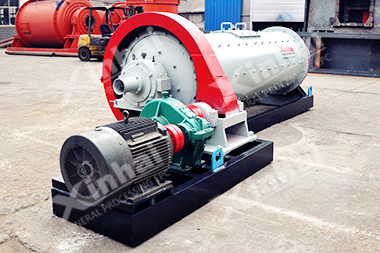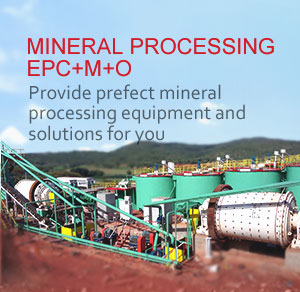- Home
- About
-
Mineral Processing EPC+M+O

Providing optimized solutions for your mine, one-stop service for mineral processing plant!
View details -
Product
- Grinding
- Classifying
Grinding & Classifying
- Flotation
- Gravity Separation Equipment
- Magnetic Equipment
- Gold Extraction Equipment
- Washing Equipment
Separating Process
- Thickening
- Dewatering Machine
Thickening & Dewatering
- Accessories
- Auxiliary Product
Consumables

Xinhai mineral processing equipment mainly include: grinding equipment, flotation equipment, dewatering equipment, magnetic separation equipment, and so on. Some of the equipment is Xinhai independent research and development, and has been awarded national patent. View details
-
Solutions
- Gold Tailings
- Tailings
Tailings

Gold CIP Production Line adsorbs gold from cyaniding pulp by active carbon including 7 steps: leaching pulp preparation, cyaniding leaching, carbon adsorption, gold loaded carbon desorption, pregnant solution electrodeposit, carbon acid regeneration, leaching pulp. View details
- Case
-
News
- Contact
Home Xinhai News Application and Maintenance of Thickener in Concentration Plant
Application and Maintenance of Thickener in Concentration Plant
2015-07-03 XinHai Views (2711)Thickener is a kind of dehydrating machine, commonly used for the thickening of concentration or the dewatering of tailings before filtering,also for the work of thickening and purification of the solid slurry in coal industry,chemical industry,building materials and water source sewage treatment industry.
In the work of dewatering of tailings, thickener plays an important role in making use of recycle water and keeping the tailings in storage in the tailings dam. Whats more, in order to improve the process of technical operations, thickener is needed, for example, the case of the lower concentration is not suitable for the operating condition. Therefore, the thickener is one of the essential dewatering equipment in the production of bebeficiation.
At present the so-called rake thickener,the continuous action of mechanical unloading thickener is widely used. The rake thickener includes three types,center transmission thickener, multi-thickener, and peripheral transmission thickener ( thickener with peripheral roller transmission and thickener with peripheral rack transmission).
Although it is simple to manage the thickener in daily operating, it is of key importance for the dressing plant.thickener is one of important device in dressing plant. If there is something wrong with the thickener,it will cause the whole plant shutdown. According to many years of practice in daily operating, cautions summarized by the team in charge of tailings dry stacking project in Xinhai Mining Machinery Co.,LTD. are as following.
??? Cautions during Post-startup and Pre-shutdown of the Motor in Thickener
In order to keep the thickener in good operating, the motor should be started before feeding, and feeding work should be start after the operating of the thickener. If extraordinary circumstances appears, feeding must be stopped before turning off the motor and the related work of lifting rake plane quickly or increasing the amount of ore discharging should be done to prevent the scraper immerging into the slurry pulp. Continuity and uniformity should be guaranteed during feeding and discharging (discharging the concentrate products).
???Cautions in Daily Operating
At the same time in the daily work,the check of thickener feeding rate, the concentration of the concentrated product and the overflow water quality are needed to meet the demands of production. In practice, the concentration of the concentrated product can be adjusted by controlling discharging speed. But when adjusting the discharging concentration, attentions should be paid to prevent the increasing of solid loss in overflow,and to guarantee the overflow water quality meets the requirements.
Thickener is of great significance for the dressing plant, so a better understanding of influential factors about thickener capacity should be made. The unit capacity of the thickener refers to each unit concentrated area of thickener, and tons of material processed per day and night. The main factors influencing production capacity are as following:
1. Feed concentration and ore discharge concentration; 2. Composition of the feed grain size; 3. The viscosity of slurry foam; 4. Reagents and the existence of electrolytes; 5. Slurry temperature; 6. The value of the concentrate material.
In addition to the above factors, the factor sedimentary slurry is the most important one affecting thickener sediment efficiency. The source of the slurry includes two kinds: the one was formed in the process of ore mining, called primary slime. The other is formed by over-crushing in the grinding process, called raw sludge. Because of the fine particle sizes, the slurry has larger surface, which make it easier to keep much water. And the water content depends on the wettability and capillary phenomenon. For the colloidal particle with the particle size of 0.1-0.1 micron, owing to the molecular force and the effect of electrostatic repulsion between the same charged particles, it tends to be balanced by the settlement itself, virtually no precipitation. Therefore, in the process of thickener precipitation, the fine particle sizes are the most difficult to be settled. In the dressing plant, the work adjusting the ratio of liquid and solid in the slurry and the method heating the slurry is often finished by adding electrolyte, active substances to the surface of colloidal particle (usually add sodium silicate or soda). This method contributes to dispersing the particles sludge flocculation and accelerated subsidence.
Recently, under the influence of the national policies, the project of dry tailing is in large demand. There is also an increase of demand in thickener. So it is necessary to have a clear picture of thickener from reading the above information.
Innovations on The Impact of Economic Slowdown
Compared with other countries in the world, Chinas economic growth rate has been enviable. But the updated data in China shows a significant trend in speed, which caused a big problem for other countr... [more]
Introductions for the Ore Flotation Solutions of the Copper Lead and Zinc
This designation of flotation process of Xinhai characterized by simple solution, short process, stable index, easy to implement and satisfy the environmental protection demands except high index of s ... [more]
Mineral Processing EPC
Solutions
CONTACT US
- Tel: 0086 15901320633
- Fax: 0086 10 59621207
- Email: mhxu@xinhaimining.net
© 2017 Shandong Xinhai Mining Technology & Equipment Inc. Technical Support: Beijing Xinhulian Technology Co., Ltd.
Factory Address: No. 188, Xinhai Street, Fushan high-tech industrial development district, Yantai, Shandong, China






